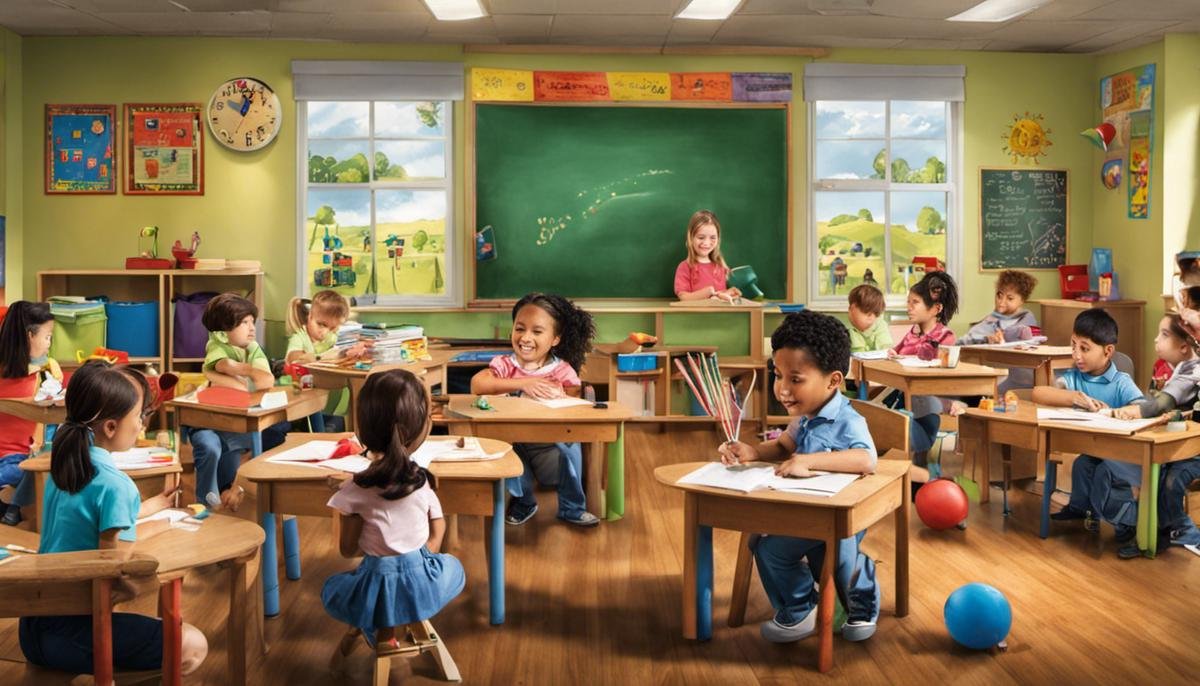
Autism, a complex neurodevelopmental disorder, is often accompanied by a spectrum of challenges that impact upon a child’s social interaction, communicative ability, and learning competence. The daily life of children with autism is often characterized by various stimulatory and sensory features, which dictate their interactions and experiences with the world at large. In this fast-paced digital age, there is an increasing array of mobile applications designed and developed with the specific purpose of assisting children with autism. These technical advancements cater to their unique needs, serving as enablers that facilitate learning and communication. The overarching goal of this examination is to further the understanding of those apps and provide insight on how to effectively employ them to enrich the lives of children with autism and optimize their developmental potential.
Identifying needs of children with autism
When approaching the topic of the unique communication and learning needs of children with autism, it’s crucial to remember that understanding and connection are absolutely possible. Autism may impact children differently, leading to varying communication and learning needs. However, these precious kiddos are as capable and worthy of learning and engaging as any child!
Verbal communication might be tricky for some children on the autism spectrum. They might have difficulties with speech, forming words, or engaging in conversation. Sometimes, there’s a delay in grasping language, or they may repeat words or phrases. It’s important, as a parent or caregiver, to patiently provide opportunities for communication. This includes using visual aids, simple language, or even technological tools designed specifically for these children. Never underestimate the power of non-verbal communication too, like gestures or facial expressions. Embrace where your child is at and use tools that meet their needs!
Children with autism often have particular learning requirements. They commonly thrive in a structured environment where they know what to expect. Visual schedules, clear instructions, and prompt feedback immensely help them learn effectively. Often, these lovely young ones have a knack for paying attention to detail, so providing them with visually engaging materials can pique their interest. Also, don’t forget to incorporate their interests as much as possible in their learning journey; this method seems to show promising results. Make learning fun and enjoyable because every child deserves an enriching and empowering education, just like their peers! Let’s value their unique strengths and celebrate every step forward they make – no achievement is too small.

Review of apps for autism
Specialized apps can be an exceptional tool for supporting children with autism in their learning and communication journey. Technology’s advances broaden the sphere of possibilities for those on the autism spectrum, helping them surpass challenges and achieve their full potential. Apps are particularly innovative due to their customizability and interactive nature, designed to cater to the varied needs and learning styles of children.
For many children with autism, maintaining focus in traditional learning environments can be a daunting task. However, the dynamic and engaging interface of certain apps can turn this perceived obstacle into an opportunity. These apps break down complex tasks into manageable bits, using vivid visuals and immediate, rewarding feedback to keep kids motivated and invested in learning experiences. Games that incorporate the child’s specific interests can teach critical lessons, ranging from basic communication to complex social skills or practical everyday tasks, in a captivating, relaxing manner.
One particular area where these apps shine is in enhancing non-verbal communication. Apps that employ iconic imagery and animated scenes can aid children in understanding and expressing emotions, which can be challenging to communicate verbally. Simultaneously, apps that focus on building vocabulary or teaching sign language can assist those with delayed language development. Apps also offer safe, structured spaces where kids can practice their communication skills at their own pace, often including visual schedules and clear instructions that helping to establish routine.
In a world where personalization is key to learning and nurturing the unique strengths of each child – highlighted by celebrating both small and large achievements – specialized apps are like companions helping children with autism find and express their true selves. By making the learning process fun, engaging, and personalized, apps can play a monumental role in overcoming communication barriers and fostering lifelong skills. The digital realm is reshaping the way we approach learning and communication for children with autism and it truly is a thrilling time to ride the wave of change.

Practical tips for using apps effectively
Incorporating these specialized apps into the daily lives of children with autism can certainly be transformative, and it often starts with understanding the child’s unique needs and interests.
Regularly using an app that aligns with the child’s personal interests can drastically enhance their engagement and motivation.
Morning cartoon fan? Consider adding an app activity during their favorite show’s commercial breaks.
Nature lover? Try utilizing apps with nature-related themes during outdoor adventures.
Remember, these applications are a tool, an extension of learning, meant to blend seamlessly into the lifestyle of the child, rather than becoming a disrupting element.
One of the most significant advantages these applications bring is the option for bite-sized learning – breaking down complex tasks into manageable chunks.
This can aid in honing in their attention and concentration capabilities.
Making app-time part of a child’s daily routine, possibly during quieter times of the day or integrated into the transition periods between different activities, can offer an optimum setting for children to engage in focused, structured learning.
Be patient – it might take some time to discover what works best for your child, and the routine might shift as their needs evolve.
Engaging alongside the child during app-time activities can make a world of difference in their learning outcomes.
Parents or caregivers’ active involvement can provide encouragement and guide the children in the right direction, with immediate feedback.
Most importantly, it perpetuates a supportive learning environment, imbuing the child with confidence and security.
With the thoughtful incorporation of these apps, leaning into their power for customization, interactive nature, and safe, structured spaces, parents and caregivers could very well ignite stellar communication advancements for their children with autism.
A digital revolution, indeed!
Remember, every swipe, click, or tap brings them one step closer to surmounting conventional communication barriers and is indeed a victory to celebrate in the world of autism.

indeed, the realm of applications designed for children with autism is both significant and diverse. The wealth of apps available offers promising potential to support their unique learning and communicative needs, fostering socioemotional growth and cognitive development. However, parents and caregivers play an integral role in fostering the full utility of these apps. It requires their astuteness in choosing the appropriate app based on individual needs and opportunities, their perseverance in maintaining regular usage despite initial resistance, and their ability to track observable progress over time. The journey is not always linear, nor easy, but every stride taken on this path charts a course towards a progressively enriched lifetime experience for the child. Remember, the end goals are growth, progress, and most importantly, happiness.




